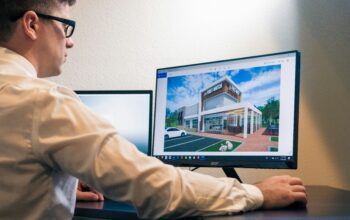Uzone.id – Have you heard about trends in smart cities and innovative building concepts? Despite the increasingly advanced development of technology and AI, smart cities and intelligent buildings are not new.
Both use the concept of ‘smart,’ and smart cities and buildings are regularly defined as those optimized by technology to improve the quality of life of citizens and the business world.
To get a deeper understanding, let’s discuss them one by one.
Smart City
Smart cities emphasize ‘how technology is used,’ not how much technology is available in the city. In general, smart cities are built to optimize city functions, drive economic growth, and improve the quality of life through various innovative technologies and data analysis.
A region can be considered a smart city with technology-based infrastructure, practical and functional public transportation, and progressive urban planning.
Smart cities leverage various software and the Internet of Things (IoT) to connect, from private vehicles and public transportation to sensors on the highway. Data from multiple lines in smart cities will be collected and then analyzed to increase city productivity.
In general, smart cities combine automation, machine learning, and IoT, which enable the application of technology to increase the productivity of the people who live in them.
For example, smart cities will no longer use police as the main force to regulate traffic. Instead, they will use intelligent traffic management to monitor traffic and reduce congestion. Smart cities will also use sensors in disaster-prone areas to provide early warnings before disasters such as floods, storms, and hurricanes occur.
Smart cities provide a high quality of life for their residents. They offer a series of integrated services with lower infrastructure costs. In addition, smart cities offer many positive environmental impacts, such as reducing fuel oil use and emphasizing paper use.
Of course, nothing is perfect. Smart city management also has various challenges, one of which is data security. To avoid data misuse, smart cities must have a data collection and storage system that is safe from hacking. Moreover, the misuse of personal data has become an issue that is always widely discussed.
Smart Building
Smart buildings include private homes, offices, and structures that use technology to optimize human productivity and the building itself.
The purpose of smart buildings is to reduce operational costs, increase occupant comfort, reduce energy consumption, create a safe environment, and reduce carbon footprints, contributing to achieving zero emissions.
They need IoT devices that enable automatic information transfer between objects, humans, and software. Second, smart buildings need connectivity technologies such as cellular networks and low-power Wide-Area Networks (LPWAN) and communication protocols such as Zigbee or Message Queueing Telemetry Transport (MQTT).
Implementing automated systems in smart buildings has created an environment with more efficient energy use. However, smart buildings are not limited to the concept of automation. They must be able to evaluate data collected by sensors and independently take action based on that data.
Launching on the Paessler The Monitoring Expert website, there are several types of smart buildings, namely:
1. Smart private homes that apply various technologies to help improve the comfort and safety of their residents. Remote and security sensors are two of the most commonly applied tools in smart homes.
2. Smart office and commercial buildings enable automatic and centralized control for water, electricity, lighting, heating, security, elevators, and waste management. For example, building managers no longer need to manually turn on or off shared electronic devices, such as lights. Sensors will work automatically, truly saving energy use.
On the other hand, in the retail industry, loT sensors will be very beneficial for business development. Sensors will automatically collect customer data so that companies can set strategies to move their business forward.
3. Smart factory buildings and warehouses are managed through an industrial IoT network that forms an ecosystem consisting of smart supply chains, smart logistics, and smart industrial machinery.
On the other hand, implementing smart buildings will create comfortable spaces for everyone who enters them. Sensors will automatically adjust public spaces’ air quality, lighting, and temperature.















